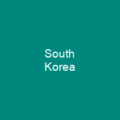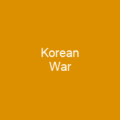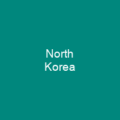Korea: A Land of Rich History and Divided Futures
The Peninsula’s Beginnings
Imagine a land where the echoes of ancient times still resonate, where mountains tower over plains that have seen countless dynasties rise and fall. Korea, a peninsular region in East Asia, has been home to human habitation since at least 40,000 BC. The name ‘Korea’ itself traces back to the ancient kingdom of Goryeo, with records dating as far back as the 9th century. But how did this land come to be divided into two nations with such stark differences?
The Division and Beyond
Since World War II, Korea has been politically split at or near the 38th parallel into North Korea (DPRK) and South Korea (ROK). This division led to the Korean War from 1950 to 1953, which ended in a stalemate without a peace treaty. The legacy of this conflict continues to shape the relationship between these two nations today.
North and South: Two Worlds Apart
While North Korea follows a ‘military first’ policy prioritizing its Korean People’s Army, South Korea is a regional power with a strong economy and military. The contrast in their approaches to governance, culture, and technology is stark. North Korea possesses nuclear weapons and one of the largest militaries in the world, while South Korea has become a global leader in technology and innovation.
Historical Echoes
The history of Korea is a tapestry woven with threads of ancient kingdoms, invasions, and cultural exchanges. From the legendary founding by Dangun in 2333 BCE to the establishment of the Three Kingdoms—Goguryeo, Silla, and Baekje—the land has seen numerous transformations.
The Rise and Fall of Dynasties
During the Goryeo period (918-1392), laws were codified, a civil service system was introduced, and Buddhism flourished. The invention of metal movable type printing by Ch’oe Yun-ŭi in 1234 revolutionized communication and literacy. However, the Joseon dynasty that followed (1392-1910) saw significant changes as well, including the adoption of Confucianism as the official ideology.
The Japanese Occupation
From 1897 to 1910, Korea was annexed by Japan. The occupation led to brutal suppression and cultural destruction, with many Koreans resisting through movements like the March First Movement in 1919. Despite this, the Korean people managed to preserve their language and culture, which continue to thrive today.
Modern Challenges
The division of Korea has created a unique situation where two nations exist on opposite sides of a heavily fortified border. The DMZ (Demilitarized Zone) is not just a physical barrier but also a symbol of the ongoing conflict and the hope for reunification.
Environmental and Cultural Diversity
The Korean Peninsula, with its well-developed plains in the south and west and mountainous regions in the east and north, boasts diverse ecosystems. Mount Paektu, the highest peak, stands as a natural wonder shared by both Koreas. The DMZ itself has become a unique biodiversity spot, home to eighty-two endangered species.
Art and Innovation
Culture and technology have played significant roles in shaping Korea’s identity. From traditional arts like Korean music and literature to modern innovations such as the invention of metal movable type printing and the development of Taekwon-Do, Korea has a rich tapestry of contributions.
Conclusion
Korea’s journey is one of resilience, innovation, and division. As we look towards the future, the question remains: can these two nations find a path to peace and unity? The answer lies in the hands of the people who call Korea home, and their determination to overcome the challenges that divide them.

You want to know more about Korea?
This page is based on the article Korea published in Wikipedia (retrieved on December 30, 2024) and was automatically summarized using artificial intelligence.







